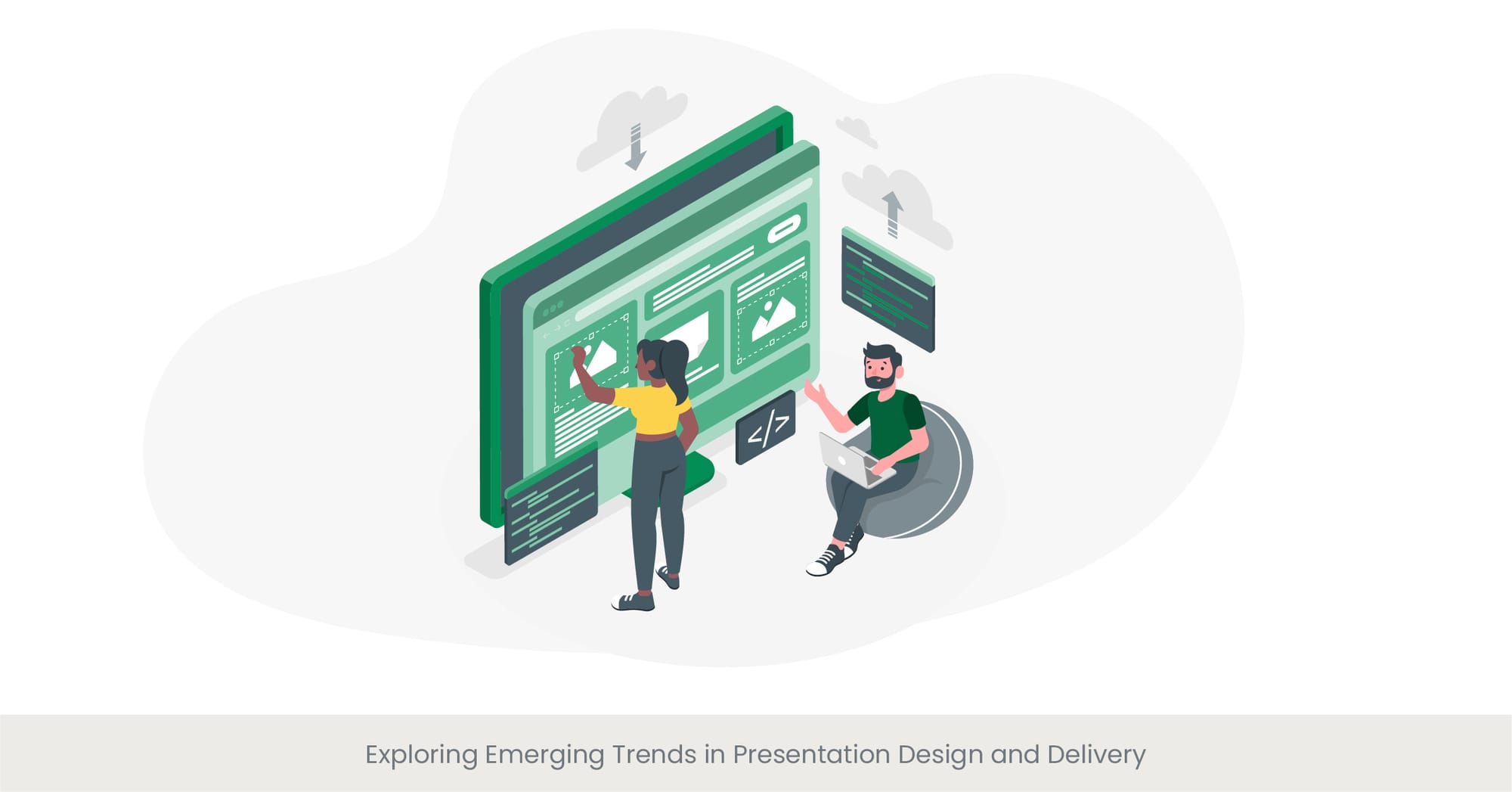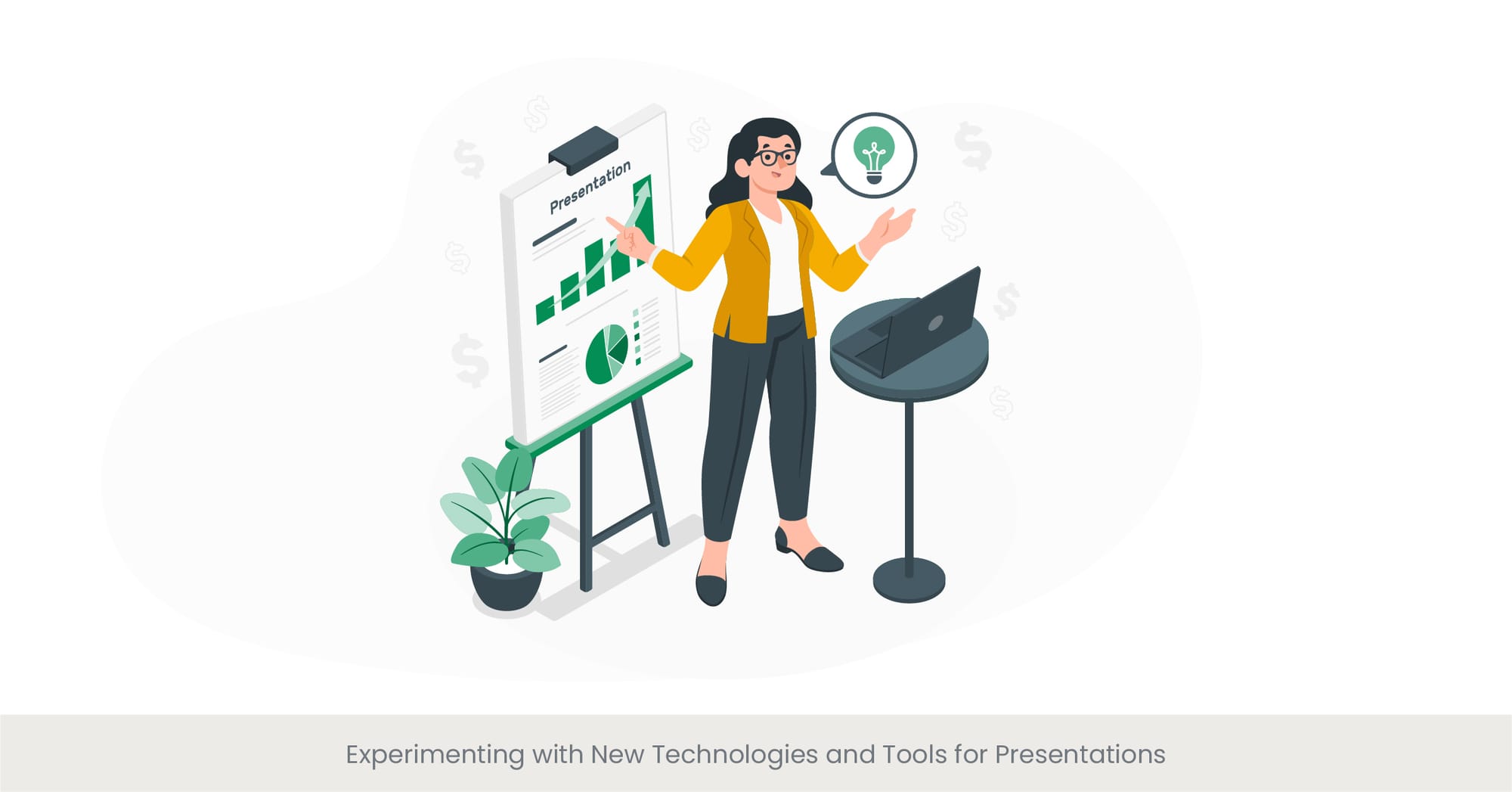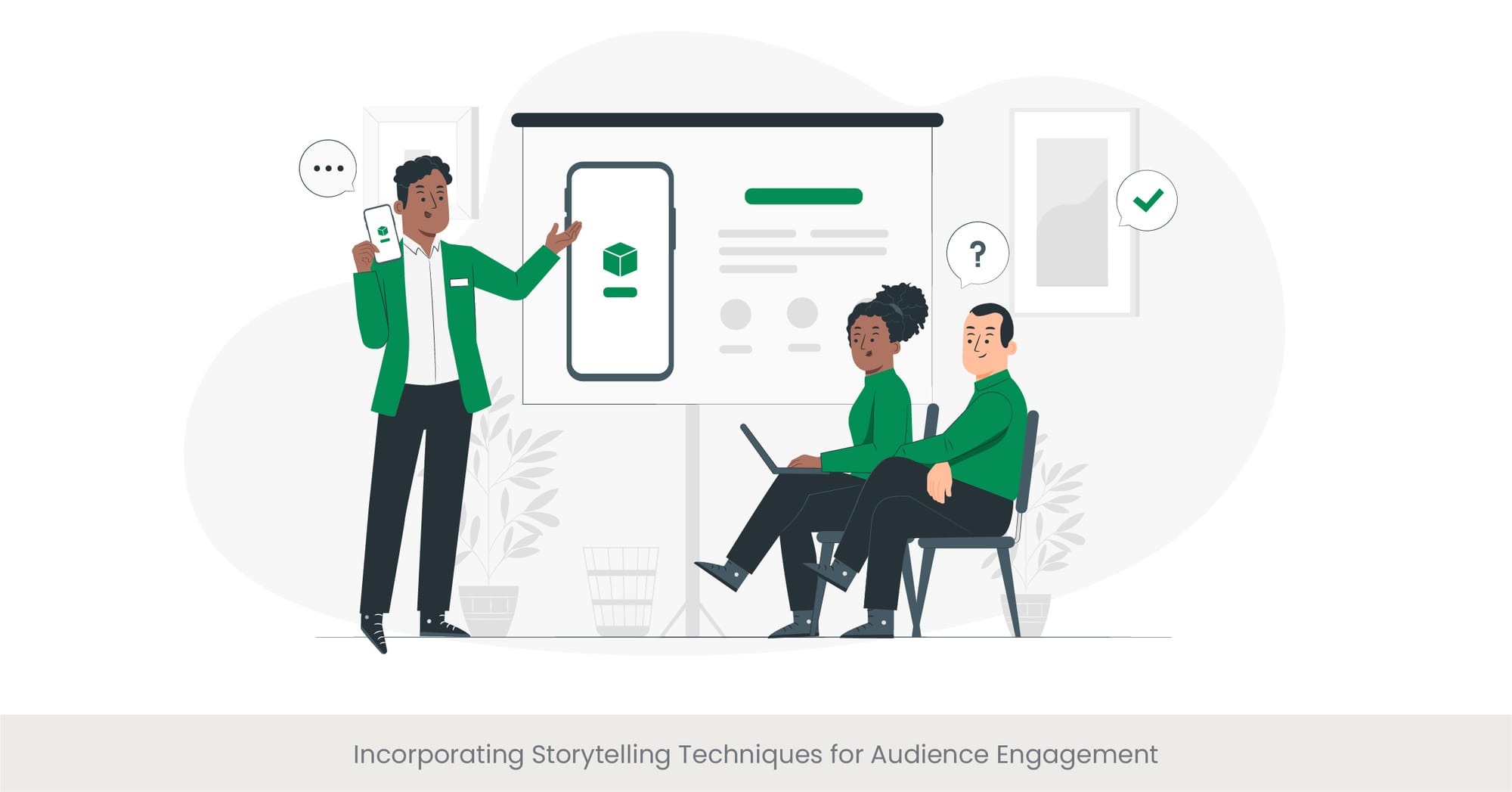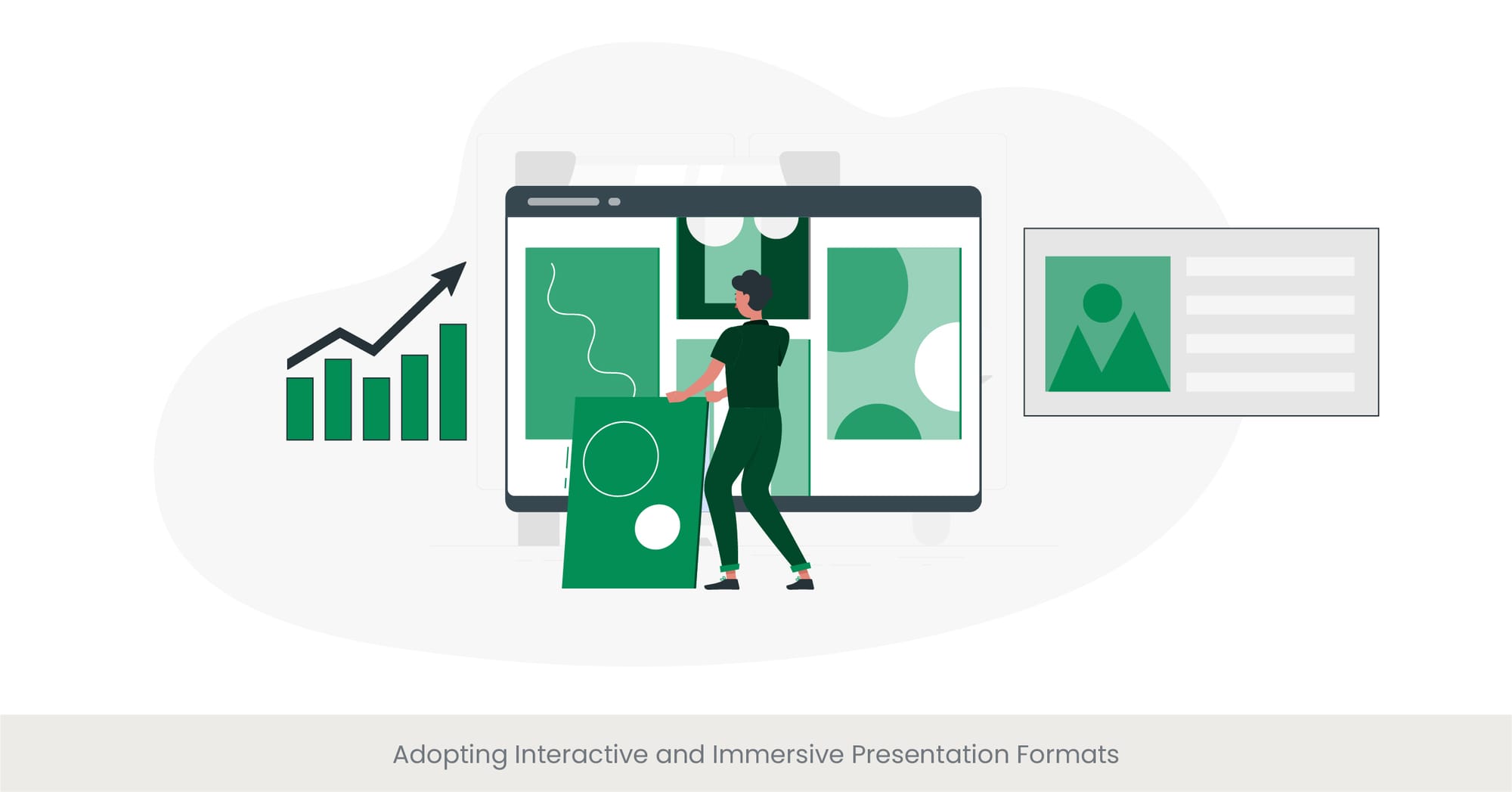
Exploring Emerging Trends in Presentation Design and Delivery

Introduction: The Evolution of Presentation Techniques
As we move further into the digital age, the landscape of presentation design and delivery continues to evolve. This evolution is driven by the integration of new technologies and methodologies that aim to enhance audience engagement and communication effectiveness. Exploring these emerging trends is crucial for professionals who wish to stay ahead in conveying their messages compellingly and memorably.
Background: From Static to Dynamic
The shift from traditional, static presentations to more dynamic, interactive formats marks a significant change in presentation techniques. Historically, presentations relied heavily on textual slides and straightforward delivery. Today, advancements in digital technology have ushered in an era where presentations can be multi-dimensional, incorporating elements like real-time data feeds, interactive elements, and multimedia content. This shift not only enhances visual appeal but also increases audience engagement.
Real-World Application: Innovative Practices in Various Sectors
Industries ranging from education to business are adopting these innovative and effective presentation skills and techniques to significant effect. For example, marketing professionals now use dynamic and interactive presentations to captivate potential clients by creating immersive experiences that showcase products or services. In academia, educators utilize interactive tools to facilitate better learning and retention among students through engaging and participatory presentations.
References and External Sources
According to a recent study published in the "Journal of Communication Technology", presentations that incorporate advanced multimedia elements can increase audience retention rates by up to 50%. Furthermore, a report by the "Global Presentation Association" highlights that companies adopting new presentation technologies report a 40% improvement in audience feedback, underscoring the growing importance of innovation in presentation techniques.
Experimenting with New Technologies and Tools for Presentations

Introduction: Harnessing Technology for Enhanced Presentations
In the realm of presentation design, experimenting with new technologies and tools is not just about keeping up with trends—it's about setting them. Today's presenters have a plethora of advanced tools at their disposal, from software that allows for seamless animations to devices that can control presentations interactively. Embracing these technologies can transform mundane presentations into powerful and engaging communication experiences.
Background: The Technology Wave in Presentations
The introduction of tools like augmented reality (AR), virtual reality (VR), and sophisticated presentation software has revolutionized the way information is delivered. Gone are the days of solely relying on basic slideshows. Now, presenters can create immersive environments or provide hands-on experiences that engage the senses beyond mere visuals, making the communication of complex data more accessible and understandable.
Real-World Application: Cutting-Edge Tools in Action
Consider the impact of AR in presentations within the real estate sector, where agents use AR to show potential buyers around properties virtually, enhancing understanding and engagement without physical presence. Similarly, companies like Microsoft and Google are continuously developing tools that allow for more interactive and engaging presentations, such as real-time translation and audience interaction features, which are particularly useful in diverse and large-scale settings.
References and External Sources
Research indicates significant benefits from integrating new technologies into presentations. A study by the "Institute of Innovative Presentation Technology" reveals that presentations utilizing interactive tools like AR and VR see a 70% increase in audience engagement levels. Additionally, a survey conducted by "TechCrunch for Presentations" reported that 60% of businesses that adopted these new tools saw improved conversion rates during pitches and presentations.
Incorporating Storytelling Techniques for Audience Engagement

Introduction: The Art of Storytelling in Presentations
Storytelling is not just an art form; it's a powerful tool for communication in presentations. By weaving key points into a narrative, presenters can capture the audience's attention and make complex information more relatable and memorable. Incorporating storytelling techniques into presentations helps bridge the gap between presenter and audience, fostering a deeper connection and understanding.
Background: Historical and Modern Perspectives
Historically, storytelling has been a fundamental method of sharing knowledge and culture. In the context of modern presentations, storytelling has evolved to include not only verbal narratives but also digital enhancements that help to visualize and enhance the stories being told. This evolution reflects a broader trend in communications, where emotional engagement and personal connection are recognized as key drivers of retention and persuasion.
Real-World Application: Stories That Resonate
From corporate CEOs to nonprofit leaders, effective communicators use storytelling to make an impact. For instance, a CEO might share the founding story of their company within a presentation to investors, highlighting challenges and successes to illustrate the company's values and drive. Similarly, educators might use stories to contextualize historical events, making them more tangible and engaging for students.
References and External Sources
Evidence of the effectiveness of storytelling in presentations is well-documented. According to research published in the "Journal of Business Communications," presentations that include storytelling elements can increase audience retention rates by up to 65%. Moreover, a survey by the "Global Storytelling Conference" found that 80% of attendees believed that storytelling made presentations significantly more compelling.
Adopting Interactive and Immersive Presentation Formats

Introduction: Engaging Audiences with Immersion
In today's digital age, the traditional lecture-style presentation is being transformed by interactive and immersive formats that engage audiences on multiple levels. These formats include everything from touch-enabled displays to audience response systems, allowing presenters to create a two-way interaction that keeps the whole audience engaged, actively involved and invested in the content.
Background: The Shift to Interactivity
The shift towards interactive presentations has been influenced by technological advancements that allow for real-time engagement and feedback. This trend is driven by the understanding that active participation enhances learning and retention. Interactive formats can include live polls, quizzes, and collaborative discussions facilitated by digital tools, which help to maintain audience attention and interest throughout the presentation.
Real-World Application: Immersive Experiences in Action
Interactive and immersive formats are being successfully implemented across various sectors. For example, educational institutions are using VR to transport students to historical sites or scientific environments, providing a deeper understanding of the subject matter. In the business world, companies are utilizing interactive dashboards during presentations that allow executives to manipulate data in real-time, offering a dynamic way to explore business scenarios with stakeholders.
References and External Sources
Studies highlight the effectiveness of these approaches. Research from the "Interactive Presentation Foundation" indicates that presentations employing interactive elements can improve audience engagement rates by up to 50%. Furthermore, a case study featured in the "Harvard Review of Business Presentations" demonstrated that companies using immersive presentation techniques reported a 30% increase in decision-making efficiency during meetings.
Integrating Virtual Reality and Augmented Reality Experiences

Introduction: The Frontier of Virtual and Augmented Realities
Virtual Reality (VR) and Augmented Reality (AR) are redefining the possibilities within presentation landscapes. By integrating VR and AR into presentations, speakers can create immersive environments that extend beyond traditional visual and auditory experiences, allowing audiences to interact with content in a more dynamic and impactful way.
Background: Technological Evolution and Adoption
The development of VR and AR technologies has progressed significantly over the last decade, transitioning from niche applications to mainstream accessibility. Originally utilized primarily in gaming and entertainment, these technologies are now being embraced by industries ranging from healthcare to real estate for their ability to simulate environments and enhance real-world interactions without the physical constraints.
Real-World Application: Transformative Impacts Across Industries
In healthcare, VR is used to train surgeons through simulated operations, offering a risk-free environment to practice complex procedures. In real estate, AR enables potential buyers to visualize property changes and enhancements in real-time during their walkthroughs. Such applications not only demonstrate the capabilities of VR and AR but also highlight their potential to transform traditional presentation methods by making them more interactive and engaging.
References and External Sources
The efficacy of VR and AR in presentations is supported by substantial research. A study published in the "Journal of Virtual Worlds Research" found that VR presentations increased retention rates by 30% compared to standard video presentations. Additionally, AR presentations have been shown to boost viewer engagement significantly, with a report from the "Institute for Immersive Presentations" indicating that AR can increase audience interaction rates by up to 40%.
Leveraging Gamification to Enhance Learning and Engagement

Introduction: The Power of Gamification
Gamification transforms conventional presentation and learning environments by incorporating game design elements into non-game contexts. This approach is aimed at boosting engagement, motivation, and participation by tapping into the innate human love for games. It makes the learning process more interactive and enjoyable, helping to cement information more effectively.
Background: Principles of Gamification
The core principles of gamification include challenge, competition, and rewards. These elements, when integrated into presentations, can drive audience participation and focus. By setting up challenges that the audience can solve, incorporating leaderboards, or offering rewards for engagement, presenters can create a compelling, game-like atmosphere that encourages active learning and involvement.
Real-World Application: Gamification in Action
Companies and educational institutions are increasingly adopting gamification. For example, a corporate trainer might use a gamified quiz to test employees on their knowledge of a new product, enhancing recall and understanding. Similarly, at conferences, organizers might employ gamification strategies such as scavenger hunts using mobile apps to encourage networking and participation among attendees.
References and External Sources
Research underscores the effectiveness of gamification in enhancing engagement. According to a study in the "Journal of Educational Technology & Society," gamified learning environments see a 40% increase in engagement compared to traditional learning formats. Another report by the "Global Gamification Education Network" found that retention rates in gamified corporate training sessions could be as high as 70%, demonstrating significant benefits over non-gamified techniques.
Emphasizing Visual Storytelling and Data Visualization

Introduction: The Importance of Visuals in Communication
Visual storytelling and data visualization are pivotal in today’s information-rich world, where presenting data in a clear and engaging manner is crucial. These techniques not only enhance the aesthetic appeal of a presentation but also aid in the comprehension and retention of complex information, making them essential tools for effective communication.
Background: Evolution of Visual Communication
Historically, visuals have played a key role in storytelling, with ancient civilizations using paintings and symbols to record history and convey messages. In the modern context, data visualization has evolved with technology, enabling the transformation of large datasets into understandable and engaging visual formats. This evolution is driven by the necessity to process vast amounts of information quickly and effectively.
Real-World Application: Visuals in Practice
In the business sector, for instance, companies leverage data visualization to present financial results, market analysis, and strategic plans in a way that is immediately accessible to stakeholders. Educational institutions use visual storytelling to simplify complex scientific concepts or historical timelines, enhancing student understanding and engagement through interactive diagrams and infographics.
References and External Sources
The effectiveness of visual aids in storytelling and data visualization is well-supported by research. A study in the "Journal of Visual Communications" reported that presentations using data visuals could increase audience understanding by up to 50%. Additionally, findings from the "Visual Learning Center" indicate that individuals retain 65% of information delivered through visuals compared to only 10% of information conveyed through text alone.
Collaborating with Cross-Disciplinary Teams for Innovative Presentations

Introduction: The Synergy of Collaboration
Collaboration across different disciplines brings a rich diversity of perspectives and expertise, which can significantly enhance the creativity and impact of presentations. By pooling knowledge from various fields, teams can develop innovative presentation techniques that are not only informative but also uniquely engaging.
Background: The Importance of Diverse Expertise
In the realm of innovative presentations, the integration of skills from different disciplines—such as technology, design, storytelling, and subject matter expertise—creates a multifaceted approach to conveying information. This cross-disciplinary collaboration is essential for developing presentations that resonate on multiple levels, appealing to a broader audience with varied interests and learning styles.
Real-World Application: Cross-Disciplinary Success Stories
One notable example is the collaboration between data scientists and graphic designers to create dynamic data visualizations for corporate presentations, making complex data more digestible and visually appealing. Another instance is tech companies teaming up with educators to develop interactive learning modules that use gamification and VR to teach complex engineering concepts.
References and External Sources
Studies highlight the value of cross-disciplinary collaboration in enhancing presentation outcomes. Research published in the "Journal of Innovative Communication" demonstrates that projects involving diverse teams result in a 30% higher engagement rate compared to those developed within single-discipline teams. Furthermore, a survey by the "Global Innovation Index" found that interdisciplinary teams are 40% more likely to produce breakthrough innovations in presentation formats.
Staying Agile and Adaptable to Changing Presentation Trends

Introduction: The Necessity of Agility in Presentations
In the fast-paced world of communication, staying agile and adaptable is essential for keeping presentations relevant and effective. As new technologies and audience expectations evolve, the ability to quickly incorporate these changes into presentation styles and content can distinguish successful presenters from the rest.
Background: The Dynamics of Change in Presentation Techniques
The landscape of presentation techniques is continually influenced by advancements in technology and shifts in audience engagement strategies. This dynamic environment requires presenters to remain flexible and open to experimentation, ensuring that their methods are not only current but also ahead of the curve.
Real-World Application: Agile Adaptations in Various Fields
For example, marketing professionals must adapt their presentation strategies based on the latest digital marketing trends and consumer behavior insights. Similarly, educators are transitioning to hybrid models that combine traditional and digital teaching methods, requiring them to continuously update their presentation techniques to engage students both in-person and online effectively.
References and External Sources
Research supports the importance of agility in maintaining effective presentations. A study by the "Institute for Advanced Presentation Studies" found that professionals who regularly update their presentation skills in response to new trends are 50% more likely to be rated as excellent communicators by their peers. Additionally, a report from the "Center for Presentation Dynamics" suggests that adaptable presenters are more likely to achieve higher engagement and satisfaction ratings from their audiences.
Encouraging Creativity and Risk-Taking in Presentation Development

Introduction: Fostering Innovation in Presentations
Creativity and risk-taking are essential for breaking new ground in presentation techniques. Encouraging these elements in presentation development not only leads to more engaging and memorable presentations but also inspires audiences and differentiates the presenter from the competition. Embracing these aspects of public speaking skills can transform standard presentations into extraordinary experiences.
Background: The Role of Creativity and Innovation
In the context of presentations, creativity involves exploring unconventional ideas, formats, and tools to communicate messages effectively. Risk-taking is similarly crucial, as it involves venturing beyond traditional boundaries to implement new and potentially more effective presentation techniques. This approach often leads to innovation and can set new standards in presentation delivery.
Real-World Application: Creative Risks Leading to Breakthroughs
An example of this in action can be seen in tech companies, where presenters often use prototypes or live demonstrations in pitches, despite the risks associated with untested technology. Another example is in the educational field, where teachers might use role-playing or interactive storytelling to engage students in complex subjects, significantly enhancing learning through creativity.
References and External Sources
Studies highlight the positive impact of creativity and risk-taking in presentations. According to a report by the "Global Creative Presentation Institute," presentations that incorporate creative design and innovative delivery methods see a 60% increase in audience engagement. Additionally, a survey conducted by "Innovative Presentation Technologies" found that 70% of audiences prefer presentations that include unique elements and take creative risks over traditional formats.
Frequently Asked Questions
1. What is a presentation in communication skills?
A successful presentation in communication skills refers to the process of delivering information effectively to an audience using various techniques like speech, visuals, and interactive elements to ensure clarity, engagement, and understanding.
2. What are the 4 types of presentation skills?
The four types of presentation skills are verbal communication skills, non-verbal communication (like body language and eye contact), visual aid utilization, and audience interaction techniques.
3. What are the 5 P's of presentation skills?
The 5 P's of good presentation skills are Plan, Prepare, Practice, Perform, and Post-Evaluate. Each step is crucial to delivering a successful and impactful presentation.
4. How do you effectively communicate in a presentation?
Effective communication in a presentation is achieved by clearly articulating your message, using engaging visuals, maintaining eye contact, incorporating storytelling, good presentation, and interacting with the audience to keep them engaged.
5. What is presentation skill training?
Presentation skill training involves educational programs or workshops that focus on improving an individual's ability to present information clearly and effectively, utilizing various various presentation communication skills, techniques and tools.
6. How can I practice presentation skills?
You can practice and improve presentation skills by rehearsing your delivery, seeking feedback from peers or mentors, participating in presentation skill workshops, and using technology to simulate presentation environments.



%20(1).jpg)
%20(1).jpg)


